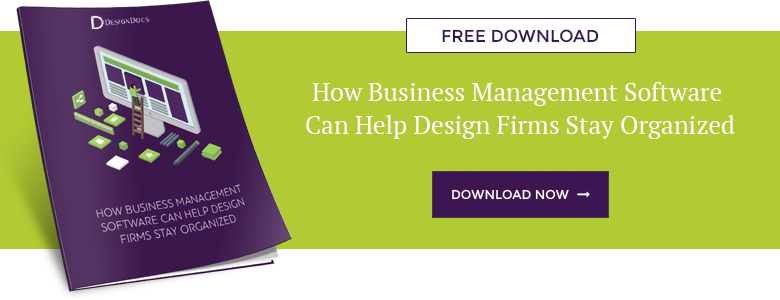Interior designers are busy people, and interior design firms are busy places. Unfortunately, all that busyness is sometimes not the result of a successful, well-organized firm, but of a firm that’s run in an inefficient manner. If you find yourself wondering if there is an “easier” way to do something, there may very well be. Here are four tips you can use to improve your interior design firm’s efficiency.
4. Look to Your Workflow
The first place for interior designers to seek efficiency is often within their workflow. Very few people, however, have their workflow laid out in a formal way, which can make it difficult to see where the inefficiency lies; some may not even have a formal workflow. Jot down, type up, or draw your workflow process.
Once you have a document illustrating how you work, look for steps that are repetitive—are you doing the same thing twice? Next, think about the logic of the workflow. Why does Step 3 follow Step 2? Would it be easier to complete that work sooner? Once you have your workflow organized in a logical way, hang on to the document to keep a formal record of your process. If you have other staff, you might get their input on streamlining the process.
3. Use Purchase Orders
Another common culprit of inefficiency in firms is the system of quote requests, quotation, and invoicing. You may create a quotation for a client or send a request to a supplier, only to receive a related document, sometimes months later. For example, a supplier may send you a pick list for an order, and later invoice you. If you do not have your request handy, how can you ensure the accuracy of the supplier’s list? If you do not have either of these documents available, how will you confirm that the supplier has invoiced the correct amount?
Using a purchase order ties related documents together quickly and easily; your request, the quote and the invoice can be located and compared simply by searching for the purchase order. That can save a lot of time.
2. Record Expenses and Time Immediately
It can be tempting to set aside small tasks for a later date, especially when you are pressed for time. Two tasks you should not leave for later is recording expenses and logging hours worked. Both of these tasks are vital to your business. When you leave recording important information for later, you increase the risk of making a mistake. You are more likely to accurately record the time you spent on a project immediately after you have finished for the day; if you wait until later, you will not have the same accuracy. That can lead to under-billing and lost revenue.
The same applies to recording expenses; you may misremember amounts or lose receipts before you have a chance to formally record the expense. When that happens, you jeopardize the accuracy of your accounting, which can lead to further mistakes that waste a lot of time and cause frustration as you try to sort out the issue.
1. Use Business Management Software for Interior Design
One of the best things you can do to increase efficiency in your firm is to invest in business management software specifically for interior design. These software solutions are designed to address the idiosyncrasies of the industry. They offer integrated functionality, which allows you to manage a project from end to end, including scheduling, creating proposals, managing accounts and payments, ordering supplies, and running reports. Many have additional features meant to support busy interior designers in their day-to-day activities; some, such as mobile functionality, help improve your efficiency.




